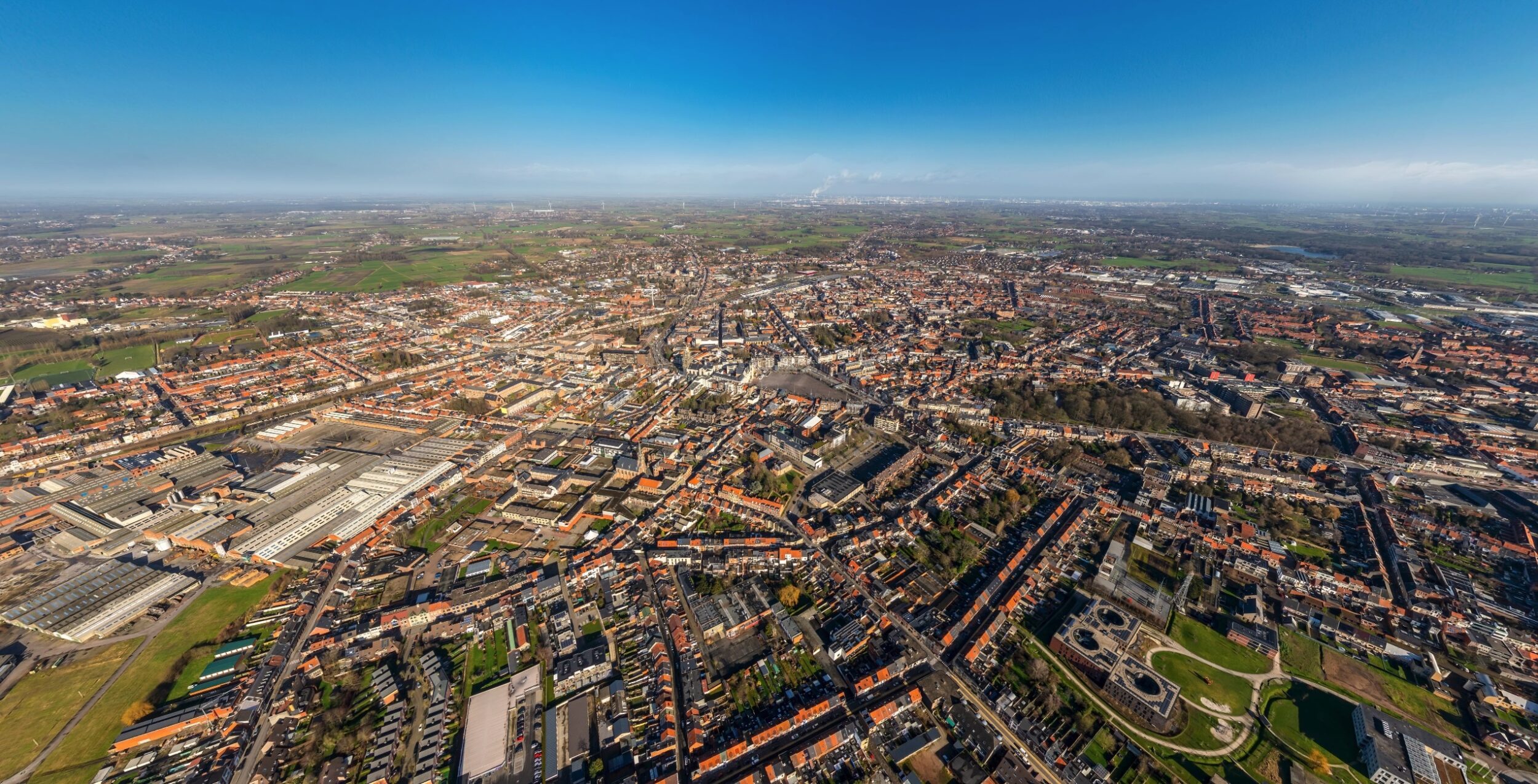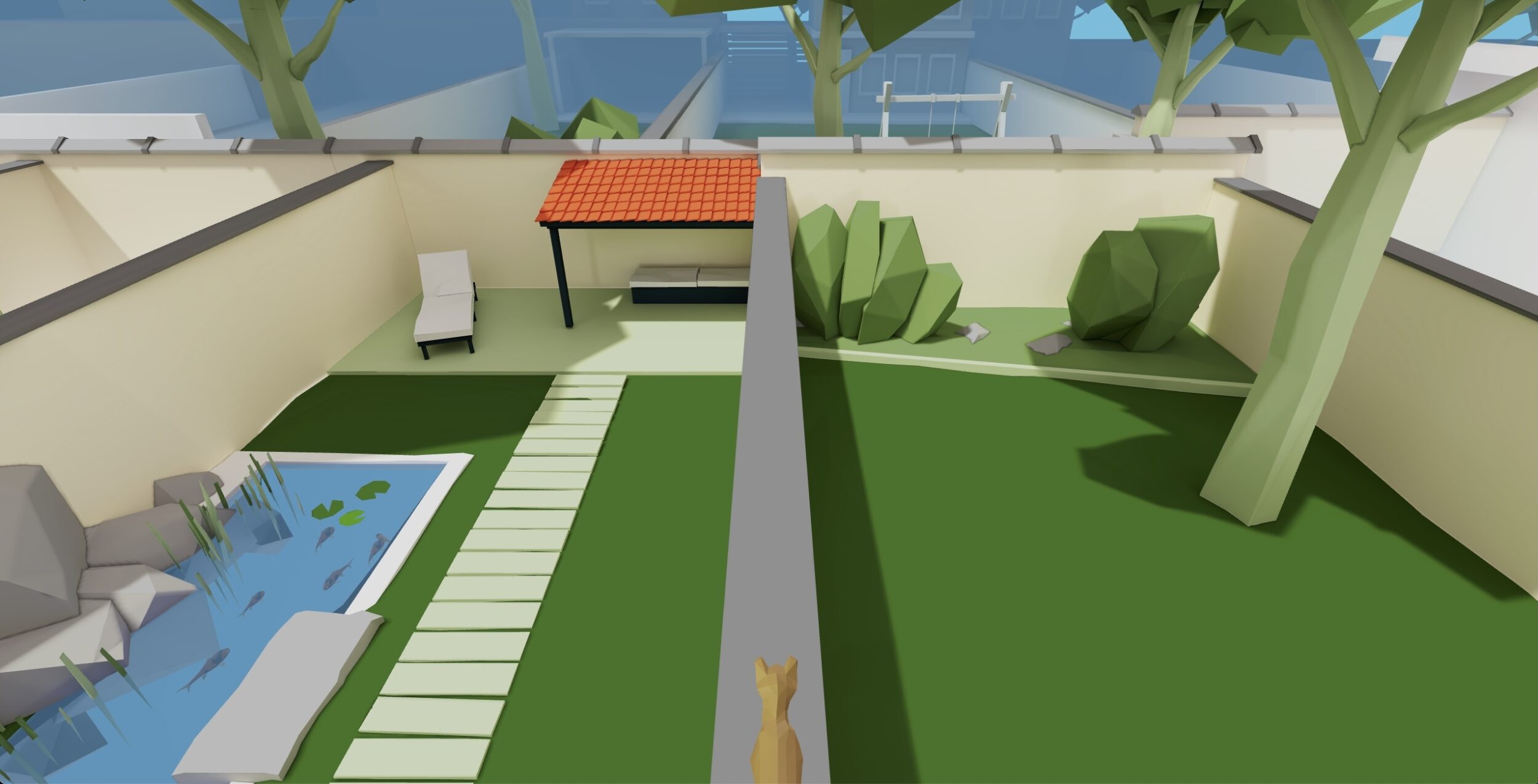City of Tomorrow in Sint-Niklaas
What’s the best way to introduce urban development to a wider audience attractively? Strong visual presentation provides the answer.
The city of Sint-Niklaas in Belgium was looking for an online web platform for easy visualization of a whole host of ongoing urban development projects. The idea was to create an online environment (accessible through any device) that would seamlessly integrate existing 360-degree simulations and renders of ongoing projects with a panoramic aerial view of the city. The main ambition? To give the proud citizens of Sint-Niklaas a taste of their so-called City of Tomorrow.
In addition, the city wanted to ensure that the ongoing projects would be accessible in a VR environment. This would require significant technical expertise.
Technical challenges
Our team came with the winning proposal. The business case required a great deal of prior experience with similar projects. Key requirements included the following:
Ability to combine 3D, visual and other content made by 10 different architecture firms, who delivered their own 3D models through different software programs and standards.
Integration of 360° video, shot from a hot-air balloon flying over the city.
Implementation of high-resolution 360-degree aerial panorama.
Additional access through a virtual reality mode for VR headsets.
A two-month delivery deadline.
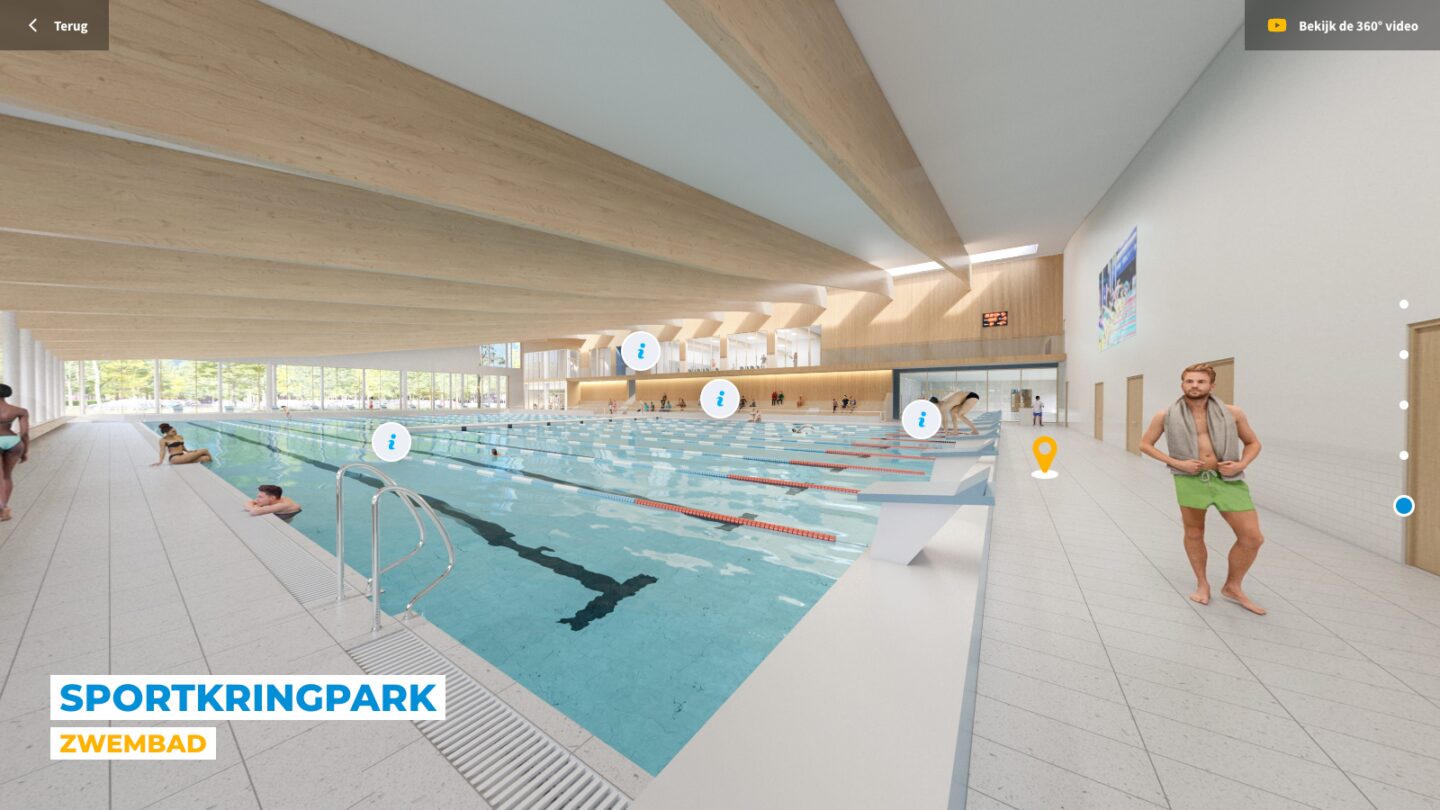
Easy content management
Our team set to work to bring all the source material together. We did so using an immersive WebVR platform, powered by a content management system (CMS). This allows us to add and manage all building sites and construction projects. In total, we added no less than 40 panoramic photos, most of which were a combination of 3D and 360-degree photography.
Among the highlights were two panoramic videos of the Grote Markt and the Sportkringpark sites, two flagship redevelopment projects. Additional visualization support was provided by partner Polygon, who specailizes in architectural 3D visualizations.
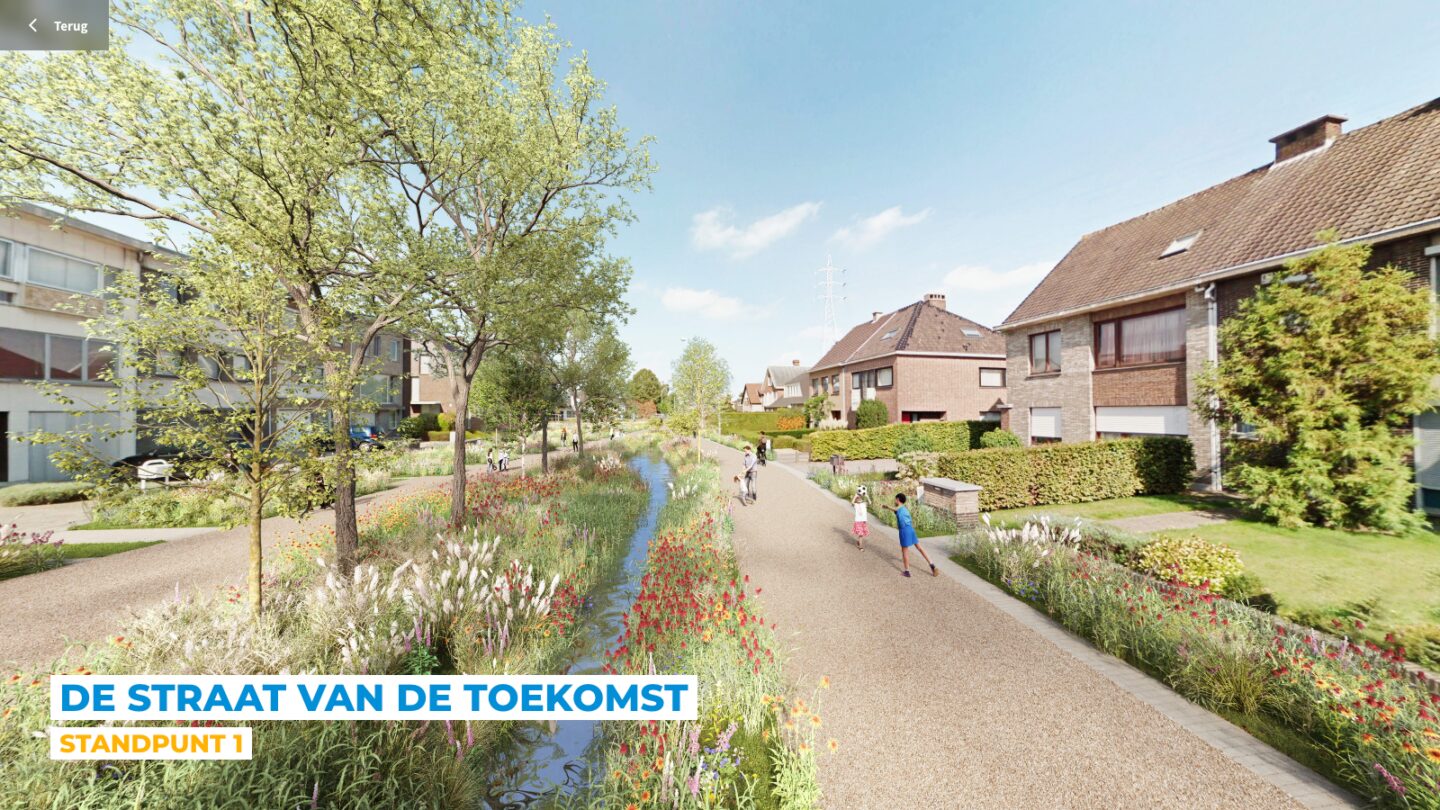
Future-proof platform
Combining photography and 3D models allowed us to create a hybrid experience, containing both 3D renderings and photographs. The aerial panoramas, captured using a helicopter and a hot air balloon, provided a clear starting point to help viewers in locating the redevelopment sites.
The entire experience also runs seamlessly in the browser of just about any VR headset. This was a key requirement, as the city council wanted to make the VR experience available to citizens at the Landhuis local government building, where a number of headsets would be made available to the public.
This increases citizen engagement, providing them with a better overview of future plans for their neighbourhood. The entire experience runs in WebVR mode: no need to install any additional apps before exploring.
The underlying platform is flexible. Using info box sections, the city’s employees are able to add new info at later stages of the development process, including pictures and text. This way, the platform acts as a future-proof investment, enabling the showcasing of future redevelopment projects across the city.
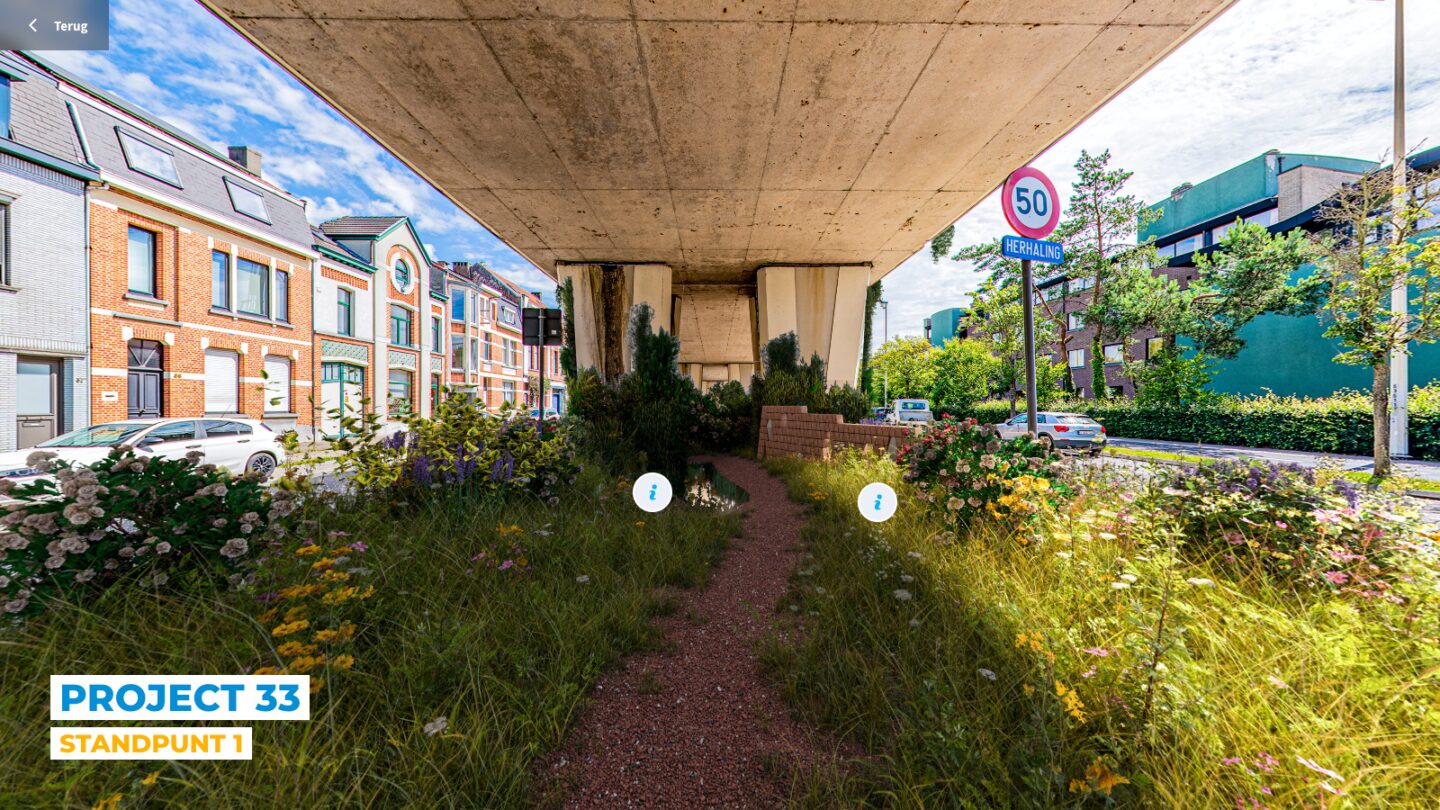
Credits
- Bart De Bock • Technical Director
- Inert • UX/UI Design
- Arnout De Coninck • Web Development
- Polygon • 3D Visualisation
